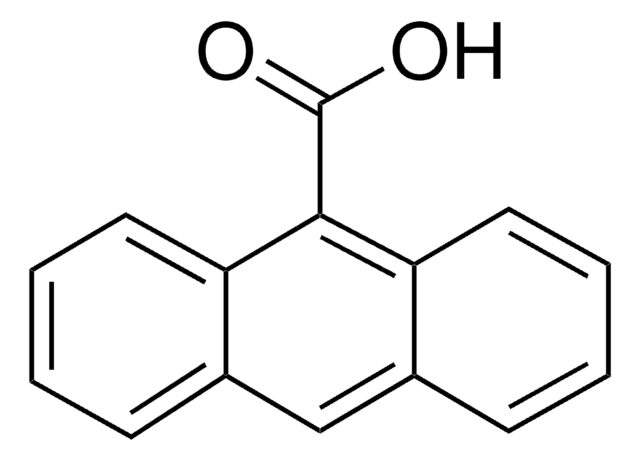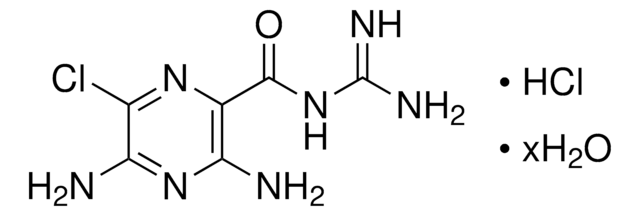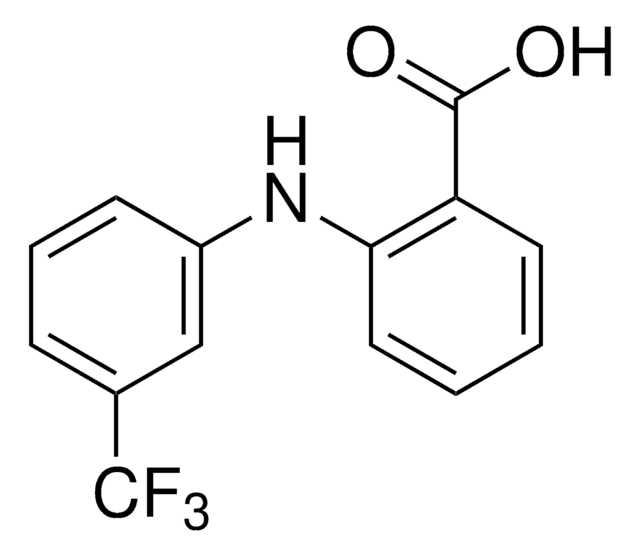Kluczowe dokumenty
I117
R(+)-IAA-94
≥98% (HPLC), solid
Synonim(y):
Indanyloxyacetic acid 94, R(+)-Methylindazone, R(+)-[(6,7-Dichloro-2-cyclopentyl-2,3-dihydro-2-methyl-1-oxo-1H-inden-5-yl)-oxy]acetic acid
About This Item
Polecane produkty
Poziom jakości
Próba
≥98% (HPLC)
Formularz
solid
aktywność optyczna
[α]22/D +36.4°, c = 0.86 in methanol(lit.)
kolor
white
rozpuszczalność
H2O: 0.2 mg/mL
0.1 M NaOH: 2.8 mg/mL
DMSO: >20 mg/mL
ethanol: 20 mg/mL
dilute aqueous acid: insoluble
temp. przechowywania
2-8°C
ciąg SMILES
C[C@@]1(Cc2cc(OCC(O)=O)c(Cl)c(Cl)c2C1=O)C3CCCC3
InChI
1S/C17H18Cl2O4/c1-17(10-4-2-3-5-10)7-9-6-11(23-8-12(20)21)14(18)15(19)13(9)16(17)22/h6,10H,2-5,7-8H2,1H3,(H,20,21)/t17-/m1/s1
Klucz InChI
RNOJGTHBMJBOSP-QGZVFWFLSA-N
Zastosowanie
Cechy i korzyści
Kod klasy składowania
11 - Combustible Solids
Klasa zagrożenia wodnego (WGK)
WGK 3
Temperatura zapłonu (°F)
Not applicable
Temperatura zapłonu (°C)
Not applicable
Środki ochrony indywidualnej
Eyeshields, Gloves, type N95 (US)
Wybierz jedną z najnowszych wersji:
Certyfikaty analizy (CoA)
Nie widzisz odpowiedniej wersji?
Jeśli potrzebujesz konkretnej wersji, możesz wyszukać konkretny certyfikat według numeru partii lub serii.
Masz już ten produkt?
Dokumenty związane z niedawno zakupionymi produktami zostały zamieszczone w Bibliotece dokumentów.
Klienci oglądali również te produkty
Nasz zespół naukowców ma doświadczenie we wszystkich obszarach badań, w tym w naukach przyrodniczych, materiałoznawstwie, syntezie chemicznej, chromatografii, analityce i wielu innych dziedzinach.
Skontaktuj się z zespołem ds. pomocy technicznej










